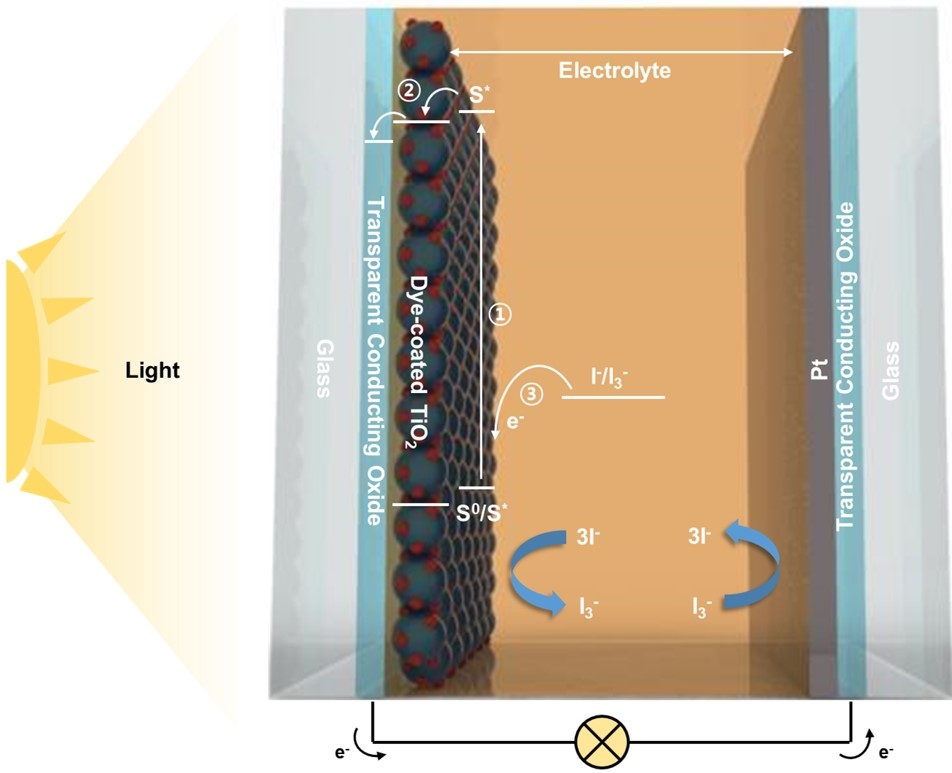Dye-sensitized solar cells (DSSCs) composed of organic or metal organic compounds dyes that are easily excited by light and inorganic oxide-based nanoparticles. These devices are one of the solar cells that are attracting a lot of attention because of their high energy conversion efficiency comparable to that of amorphous silicon solar cells and very low manufacturing costs. When sunlight is absorbed on the surface of the cell on which the dye is adsorbed, the dye molecules generate electrons, and the electrons are transferred to the transparent conductive oxide thin film through the interface of the nanoparticle semiconductor oxide electrode to generate electric current. At this time, the holes generated in the dye molecules receive electrons by the electrolyte containing the redox species and are reduced again to complete the dye-sensitized solar cell operation process.
Our group is engaged in developing novel photo electrode materials for DSSCs. Our group is also involved in basic understanding for DSSC performance evaluation and interpretation of the relation between the performance and mechanism.

